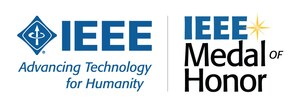Wireless Sensor Networks Get Real with Real-World Applications in Current Issue of Proceedings of the IEEE
Leading Research Journal Foretells a Network More Powerful Than the Internet; Medical, Environmental Innovations Also Cited
PISCATAWAY, N.J., Dec. 13, 2010 /PRNewswire/ -- A network more powerful than the Internet, while perhaps inconceivable right now, is just one of many potentially life-changing applications for wireless sensor networks (WSN) highlighted in a special update issue immediately available about Sensor Networks and Applications in Proceedings of the IEEE, the world's most highly-cited general interest journal in electrical engineering and computer science since 1913.
Published by the IEEE, the world's largest technical professional association, additional topics of this Proceedings issue include a look at forward-thinking healthcare applications for WSN that could greatly improve electronic triage at large disasters by monitoring the injured as well as medical personnel; a conservation approach for utilizing sensor networks to conserve natural resources like electricity, gas and water, and the emerging trend of publishing real-time sensor data on the Web that opens up a wide variety of novel application scenarios.
"Sensor network research has grown dramatically in the seven years since Proceedings of the IEEE first published a special research issue on 'Sensor Networks and Applications' in August, 2003," explains Neal Patwari, guest editor for the Sensor Networks and Applications edition. "The visions for sensor networks and their applications have changed as research perspectives have shifted, so as we move forward it is important to pause at this crossroad and 'look both ways' to better understand how these perspectives came to be and have evolved over time."
Sensor network research of the past decade is enabling a new tier of the Internet to emerge. As presented in "IPv6 (Internet Protocol version 6) in Low-Power Wireless Networks" by Jonathan Hui and David Culler, developments of the past decade in low-power networking technology as well as the Internet Protocol will allow the Internet to extend into the physical world.
"A decade ago, the sensor networking community eschewed the use of IP for low-power networking because of a perception that IP was too resource-intensive and ill-suited to the needs of sensor network applications," explains Jonathan Hui of Cisco Systems. "Not being bound to particular network architecture allowed significant developments in low-power wireless networking, but it was difficult to incorporate such networks into an existing IP-based network infrastructure."
The paper demonstrates that it is possible to take the recent developments of low-power wireless networking and incorporate them into IP-based network architecture.
"IPv6, the next version of the Internet Protocol designed to supersede IPv4, provides the necessary scaling and autoconfiguration properties needed to handle the expected growth of the Internet," says Hui. "IPv6 also provides the flexibility to include sensor networking advancements in low-power communication and mesh routing within the IP framework."
With various standards bodies, such as the IETF (Internet Engineering Task Force), Z-Wave and ZigBee, adopting IP within low-power wireless networking standards, the stage has been set for the next tier of the Internet.
"With physically embedded devices, the Internet will grow far beyond its current scale with new and unforeseen applications," predicts Hui. "IP provides the necessary architecture and framework for continued innovation in the low-power wireless networking space."
Medical care will be a major beneficiary of the research outlined in "Wireless Sensor Networks for Healthcare" by JeongGil Ko, Chenyang Lu, Mani B. Srivastava, John A. Stankovic, Andreas Terzis and Matt Welsh, when these applications come to fruition. For example, according to the authors, the increased portability, scalability, and rapidly deployable nature of wireless sensing systems can be used to automatically report triage levels of numerous victims and continuously track the health status of first responders at the disaster scene more effectively.
While the paper acknowledges that triage protocols for monitoring the injured in mass-casualty disasters and other emergencies already exist, the problem currently is that their effectiveness can quickly degrade with increasing numbers of victims.
"There's a critical need to employ new WSN technology to improve how we monitor the health of first responders during mass-casualty disasters, because if the people on the ground cannot function at an optimal level due to exhaustion or health issues we must know this and intervene before they and the disaster victims suffer negative consequences," explains JeongGil Ko of Johns Hopkins University.
With the aging of America, the use of wireless sensor technology to foster an economical and efficient way to monitor age-related illnesses could be big news now and in the future. The paper explains how wireless networked sensors could be carried on a person or embedded in people's living spaces to collect data about personal, physical, physiological and behavioral states in real-time, everywhere.
"These 'living records' will help individuals increase self-awareness of their health situation and will also help caregivers obtain early intervention when problems are evident," explains Ko.
Also explained in this medical-focused article is the potential for a WSN monitoring application that provides aging and infirm patients with assistance for motor and sensory decline.
"When these sensors are worn by patients in declining health, the sensors deliver data that enable off-site medical support teams to attempt to help them retrain declining parts like arms and legs or provide some medical or mechanical supports so the patient can sustain a safe level of independence as long as feasible," explained Ko. "Ultimately the network sensors can help determine the right time for assistance devices like canes, crutches, walkers and wheel chairs."
It won't be long until "Smart Buildings" are helping us conserve both energy and money by employing WSNs that adjust instantly to optimum heating and cooling temperatures, according to a paper with environmental research ramifications. Entitled "Circuit Design Advances for Wireless Sensing Applications" by Dennis Sylvester, Gregory Chen, Scott Hanson and David Blaauw, the paper provides a comprehensive review of recent work in ultra-low-power circuits with examples of specific applications for medical diagnosis, infrastructure monitoring and environmental sensing among others.
Another future-gazing example is the use of agricultural sensors implanted in the ground adjacent to where crops grow that can deliver finite measurements for water presence and help save this resource by reducing the amount of water necessary for healthy crop growth. This application is explained in the research paper "Measurement Scheduling for Soil Moisture Sensing: From Physical Models to Optimal Control" by David Shuman, Ashutosh Nayyar, Aditya Mahajan, Yuriy Goykhman, Ke Li and Mingyan Liu.
About IEEE
IEEE, the world's largest technical professional association, is dedicated to advancing technology for the benefit of humanity. Through its highly-cited publications, conferences, technology standards, and professional and educational activities, IEEE is the trusted voice on a wide variety of areas ranging from aerospace systems, computers and telecommunications to biomedical engineering, electric power and consumer electronics. Learn more at http://www.ieee.org.
About The Proceedings of the IEEE
Founded in 1913, (originally as Proceedings of the IRE), Proceedings of the IEEE is the most highly-cited journal in electrical engineering and computer science. This journal provides the most in-depth tutorial and review coverage of the technical developments that shape our world using guest authors and editors from the best research facilities, leading edge corporations and enlightened universities around the world. For more information on Proceedings of the IEEE and the latest ideas and innovative technologies, visit http://ieeexplore.ieee.org/xpl/RecentIssue.jsp?punumber=5.
SOURCE IEEE
WANT YOUR COMPANY'S NEWS FEATURED ON PRNEWSWIRE.COM?
Newsrooms &
Influencers
Digital Media
Outlets
Journalists
Opted In






Share this article